Confined Space Rescue Team
Confined space rescue secures confidence for companies operating in hazardous environments. There are many dangers associated with confined spaces, such as atmospheric hazards, engulfment, lack of ventilation and electrical hazards. Our specialist expertise in confined space rescue protects people and places in high-risk industries including mining, port security, energy and chemical production.
Companies who already trust us
Defining a confined space
Confined spaces vary by site but are typically characterised by limited access or egress, and the potential for hazardous conditions. They could have low natural ventilation and poor oxygen levels, contaminants, toxic gases, poor or no natural light, explosive gases, extreme temperatures or areas of water.
In most instances these are areas not intended for human inhabitation. Examples include tanks, silos, vaults, sewers, and tunnels.
By understanding the specific dangers and risks associated with different types of confined spaces, companies can take proactive steps to protect their workers. Triton Risk Management specialises in providing comprehensive solutions for confined space rescue, ensuring the safety of workers in these challenging environments.
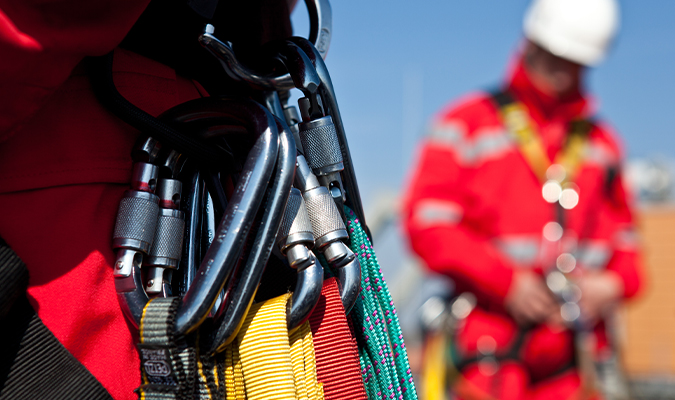
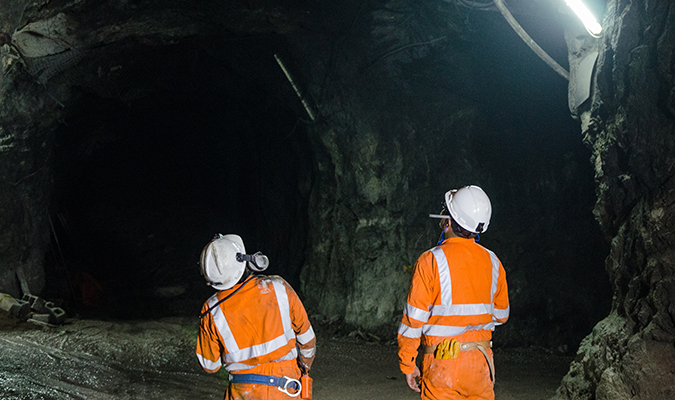
Securing confidence in confined space
At Triton Risk Management, we understand that securing confidence in confined space work is paramount. Establishing a proficient confined space rescue team is not just a compliance requirement; it’s a commitment to the safety and well-being of your workers.
Setting up a confined space rescue team is a crucial step in ensuring safety for confined space daily duties. Proper training, equipment, and adherence to safety protocols are crucial for the success of these teams in preventing and mitigating incidents.
We are able to provide a wide range of specialist services built around your specific risk profile.
How do we activate a Confined Space Rescue Team
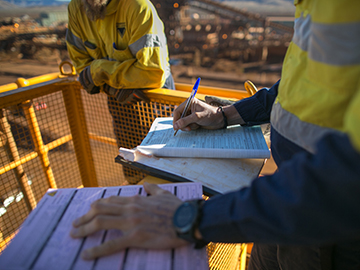
01
Identify the need
Review workplace hazards: Conducting a thorough assessment of all confined spaces in the workplace to determine potential hazards, including atmospheric, physical, and chemical hazards.
Assess risk levels: Evaluating the risk associated with each confined space. Considering factors such as the nature of the work to be performed, the history of incidents or near misses, and the complexity of rescue scenarios.
Ensure compliance: Adhering to relevant safety regulations and standards that may require the establishment of a confined space rescue team.
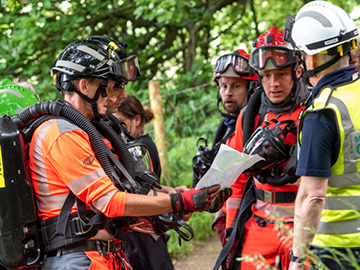
02
Define team roles & responsibilities
Build a team: Determining its size and composition by assigning specific roles and responsibilities to team members, including leader, rescuers, attendants, and equipment operators.
Training & certification: Ensuring that team members receive proper training and certification in confined space rescue techniques, including first aid, CPR, the use of rescue equipment, and safe entry procedures.
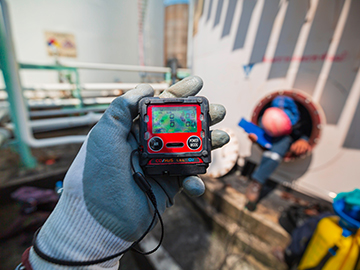
03
Assign necessary resources
Spec rescue equipment: Including personal protective equipment (PPE), gas detectors, communication devices, harnesses, winches, and hoisting equipment. Ensuring that all equipment is well-maintained and inspected.
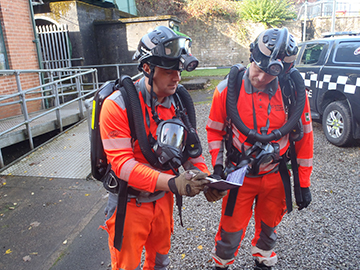
04
Develop comprehensive SOPs & RAMS
Create procedures: Developing Standard Operating Procedures (SOPs) and Risk Assessment and Method Statement (RAMS) for confined space entry and rescue operations. These procedures outline the steps for assessing confined spaces, preparing for entry, conducting rescue operations, and post-rescue activities.
Safety protocols: Including atmospheric monitoring, ventilation, communication, entry permits, and emergency response. Emphasising the importance of continuous monitoring during confined space work.
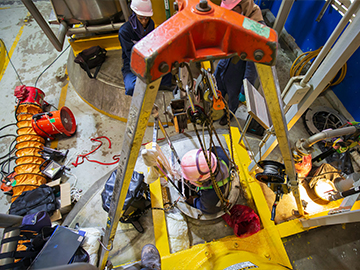
05
Conduct training & drills
Training: Educating all personnel involved in confined space entry and rescue on the established SOPs and safety procedures. Providing regular refresher training to keep skills current.
Mock drills: Conducting mock confined space rescue drills and exercises regularly to ensure that team members are proficient in executing rescue operations safely and efficiently. Evaluating and documenting drill outcomes for continuous improvement.
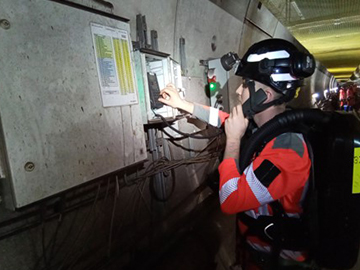
06
Establish communication & reporting protocols
Communication: Defining clear comms protocols for team members involved in confined space entry and rescue. Ensuring that team members can communicate effectively with each other and with workers inside the confined space.
Reporting & documentation: Establishing procedures for reporting incidents, near misses, and lessons learned. Maintaining detailed records of confined space entries, rescues, and equipment inspections.
Our Expertise in Confined Space Rescue
Our dedicated team specialises in providing top-notch confined space rescue services tailored to your unique risk profile. We recognise that confined spaces can vary greatly, from storage tanks and silos to tunnels and vaults. Each presents distinct challenges and dangers that demand a specialised approach.
Comprehensive Training and Equipment:
We ensure that our rescue teams receive rigorous training and certifications to handle the complexities of confined space rescues. From first aid and CPR to the use of state-of-the-art rescue equipment, our experts are prepared for any scenario.
Adherence to Safety Protocols:
Safety is at the core of our operations. Our commitment to safety protocols, including thorough risk assessments and method statements, sets us apart. We emphasise the importance of continuous monitoring during confined space work, ensuring that risks are identified and addressed promptly.
Tailored Solutions for Your Needs:
We believe that confined space rescue is not a one-size-fits-all approach. That’s why our services are customisable to your specific requirements. Whether you operate in the manufacturing, construction, or utility sector, our solutions are designed to align with your industry’s unique challenges.
Your Partner in Mitigating Confined Space Risks:
By partnering with Triton Risk Management, you’re not just meeting compliance standards; you’re prioritising the safety and well-being of your workforce. Our confined space rescue services are backed by experience, expertise, and a relentless commitment to ensuring that every worker returns home safely.
Why Triton Risk Management for Confined Space Rescue?
You can rely on us to deliver national coverage and support 24/7.
Your sites will benefit from our experienced teams working alongside other rescue services, scaffolders, crane operators, roped access teams, fire and rescue services and HART teams, if required. We pride ourselves on using state-of-the-art search and rescue equipment.
Whatever your needs, our dedicated standby rescue teams and specialist confined space rescue consultants are highly experienced and provide both ‘entry’ and ‘non-entry’ rescue solutions to businesses across the UK.
Case Studies / Insight Articles on Confined Space Rescue Team
Frequently Asked Question's
What does a confined space rescue team do?

A confined space rescue team is responsible for performing rescue operations in confined spaces when individuals inside those spaces encounter emergencies, such as injuries, illness, or entrapment.
The primary focus the team is to ensure the safety and well-being of individuals working in or entering confined spaces. And to respond swiftly and effectively in the event of an emergency.
What are the duties of a confined space rescue team?

The key duties of a confined space rescue team are essential for ensuring the safety of workers and responding effectively to emergencies within confined spaces.
These duties can include: pre-entry assessment, emergency response, rescue plan development, personnel entry supervision, atmospheric monitoring, rescue equipment operation, medical evaluation and first aid, rescue techniques, communication and coordination, post-rescue procedures, documentation and reporting, training and preparedness, and continuous improvement.
Why are confined spaces important?

Confined spaces are important for various industrial and commercial activities but also pose unique risks that necessitate specific safety measures and protocols.
They play a vital role in infrastructure maintenance but their importance is accompanied by inherent risks.
To harness the benefits of confined spaces while ensuring safety, organisations must establish and maintain robust safety protocols, conduct risk assessments, provide adequate training, and, when necessary, deploy confined space rescue teams to respond to emergencies.
Do I need a confined space rescue team?

Your need for a confined space rescue team is determined by a combination of regulatory requirements, risk assessments, and the specific circumstances of each confined space.
It’s crucial to comply with applicable regulations and ensure that workers are adequately trained and equipped for confined space entry and rescue.
When in doubt, consult with safety experts like Triton Risk Management or regulatory authorities to determine the appropriate rescue procedures and resources for your confined space operations.
How many people do I need for a confined space rescue team?

The size of a confined space rescue team is influenced by several factors, including: the complexity of the confined space, the specific hazards involved, training and expertise, regulatory requirements, equipment and resources, communication needs, medical and additional support needs.
It’s important to assess the specific requirements of your organisation’s confined space rescue needs and ensure that the team you select is adequately trained, equipped, and staffed to respond to potential emergencies.
The goal is to have a rescue team with the right combination of skills and resources to conduct safe and effective rescues in accordance with safety regulations and industry best practices.
Who is in a confined space rescue team?

A confined space rescue team typically consists of trained individuals who are responsible for responding to emergencies and performing rescues. The composition of the team depends on the specific needs and risks associated with the confined spaces in your workplace. However, these are some of the key roles and positions commonly found in a confined space rescue team:
Team Leader, Rescuers, Attendants, Equipment Operators, Medical Personnel, Safety Officer, Communication Specialist, Backup Team, Training Coordinator,
Logistics and Support Personnel.
How frequently should teams conduct practice rescue exercises?

There is no one-size-fits-all answer, but ultimately, the goal of practice rescue exercises is to ensure that the rescue team is well-prepared to respond to confined space emergencies effectively and safely.
The frequency should strike a balance between maintaining proficiency and not overburdening the team, taking into consideration the unique characteristics of your workplace and the confined spaces involved. Regular training and evaluation are key components of successful confined space rescue preparation.
